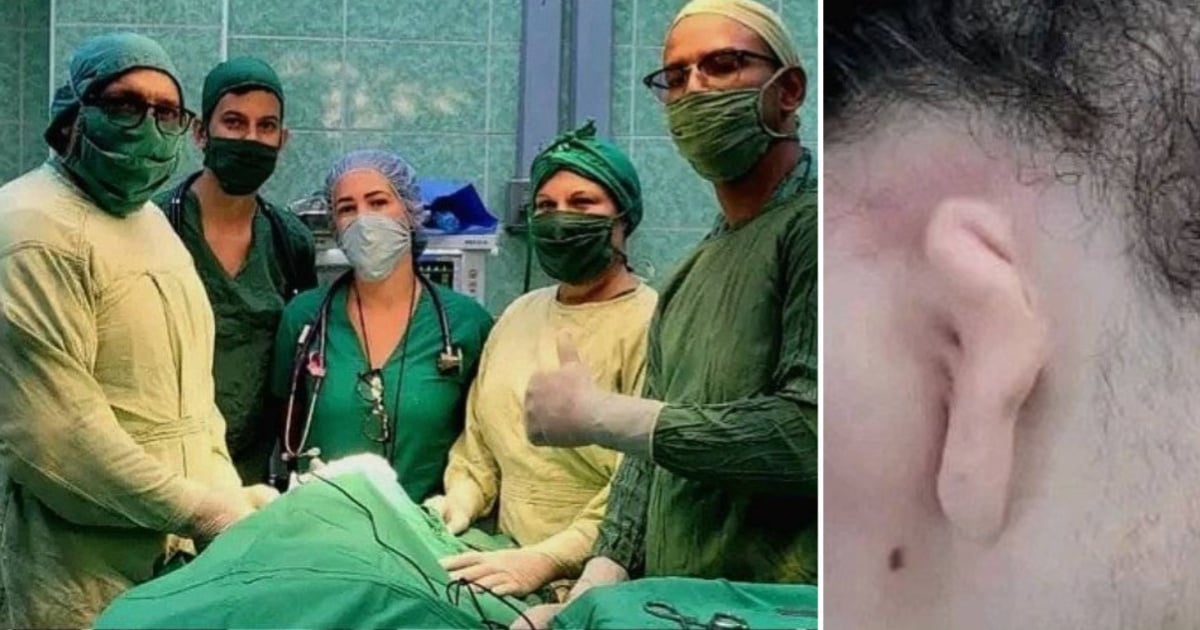An 18-year-old from Cacocum became the first patient in Holguín to undergo a microtia reconstructive surgery at the Octavio de la Concepción de la Pedraja Pediatric Hospital on Thursday. This intricate procedure was carried out by a team of specialists led by Dr. Jorge E. Márquez Camayd, head of the Plastic Surgery and Burn Care Service at the hospital, as reported by the state-run local newspaper Ahora.
The operation involved reconstructing the external ear using the patient's own rib cartilage. Hospital authorities announced on social media, "The surgery was successful, and the patient's recovery has been satisfactory."
Microtia is a congenital deformity of the outer ear that can range from minor abnormalities to complete ear absence. According to Dr. Márquez Camayd, this condition significantly impacts patients emotionally, especially during childhood and adolescence.
Microtia occurs in approximately one in every 8,000 to 10,000 births, most commonly affecting one ear, with the right ear being more frequently involved. This procedure marks a significant milestone in the region's medical care by eliminating the need for patient transfers to Havana, where such specialized procedures were previously concentrated. Introducing this technique in Holguín signifies progress in decentralizing high-complexity medical services in Cuba.
The medical team noted that this successful experience paves the way for offering systematic and free treatment to other children and adolescents with this condition without needing to leave the province.
Amid a collapsing healthcare system plagued by shortages of supplies, outdated technology, and overburdened staff, occasional medical achievements stand out for their clinical value and for being accomplished under extremely challenging conditions. At the end of June, an 80-year-old man underwent a balloon aortic valvuloplasty, a minimally invasive procedure never before performed by the medical team at the Santiago de Cuba Cardiocenter. This approach was chosen due to the high risk associated with open-heart surgery, which the family of the elderly patient declined.
The patient suffered from combined mitral-aortic valve disease, ischemic sclerodegenerative heart disease, and chronic heart failure exacerbated by severe aortic stenosis and mild to moderate mitral insufficiency. These conditions made traditional surgery extremely risky.
Key Insights into Ear Reconstruction and Healthcare Challenges in Cuba
What is microtia and how common is it?
Microtia is a congenital deformity of the outer ear that can vary from minor deformities to complete ear absence. It occurs in approximately one out of every 8,000 to 10,000 births, more frequently affecting the right ear.
Why is the ear reconstruction surgery in Holguín significant?
This surgery represents a major advancement for Holguín as it eliminates the need for patient transfers to Havana for specialized procedures, signaling a move towards decentralizing complex medical services in Cuba.
What challenges does the Cuban healthcare system face?
Cuba's healthcare system struggles with supply shortages, outdated technology, and overburdened medical staff, making achievements like this surgery notable for their clinical accomplishment under difficult conditions.
